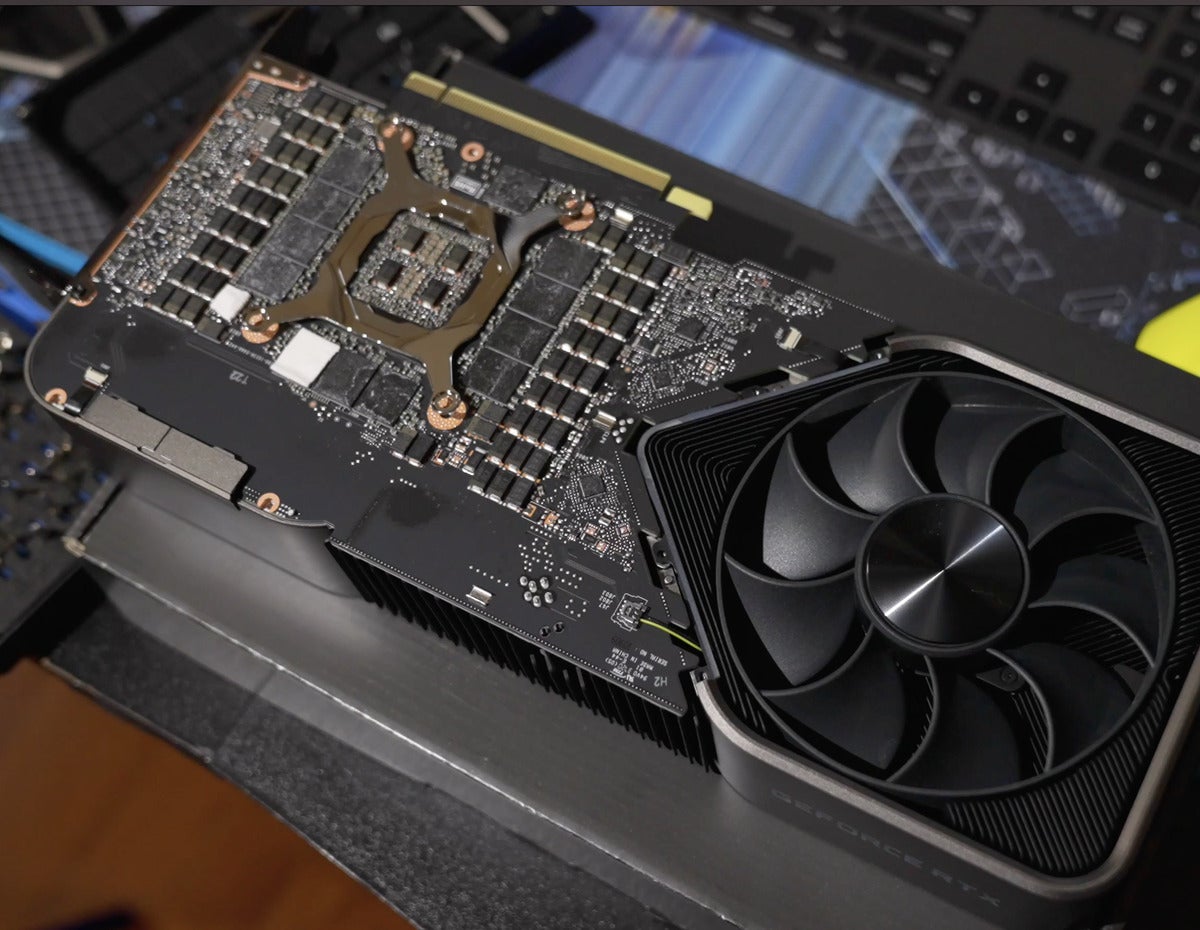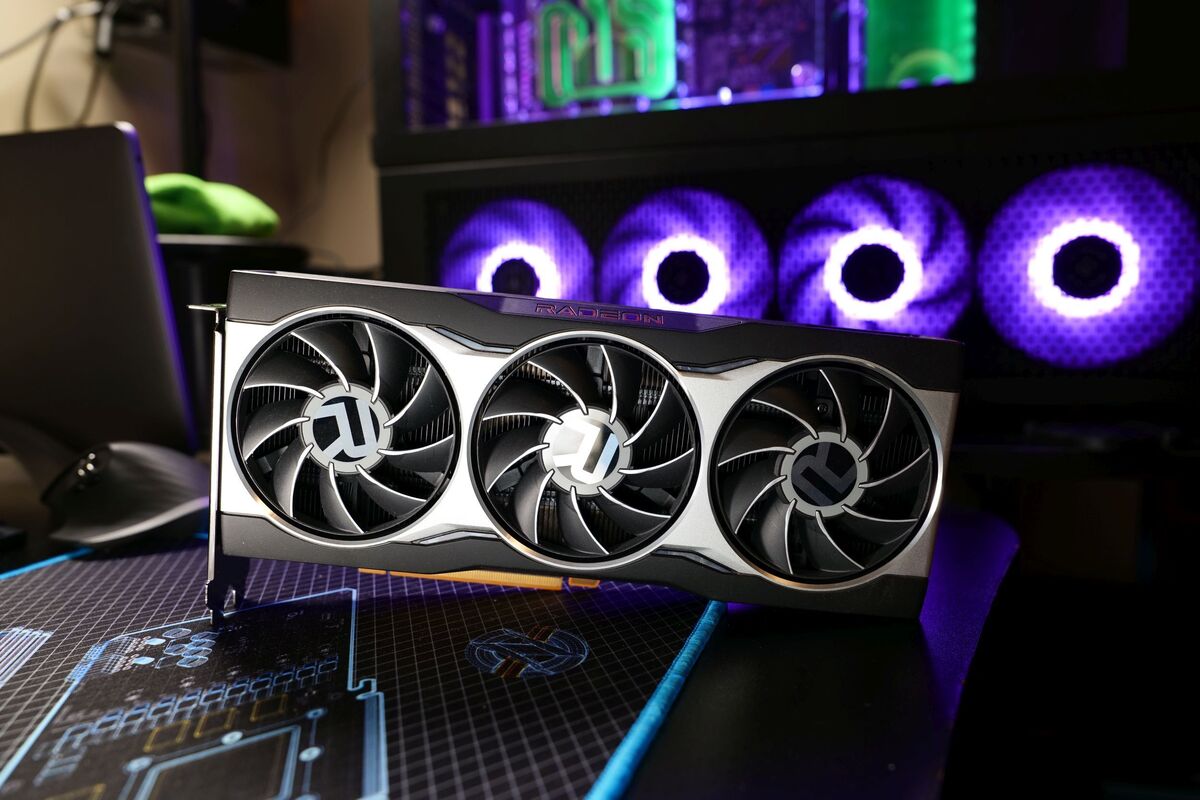Should you buy a used mining GPU? Usually, you may want to avoid graphics cards that were used around the clock to mine cryptocurrency. But now that the market is being flooded with used GPUs after crypto’s collapse, ending the multi-year Great GPU Shortage, you might be tempted to pick up one of the best graphics cards second-hand. There’s a good chance those ultra-cheap used graphics cards were used for crypto-mining, however.
Is that a deal breaker? Should you buy a used mining GPU? Let’s break down when they may be available, what the risks are, and if you should worry about degraded performance.
What are the risks with used mining GPUs?
The obvious worry for buying a graphics card used for mining is that performance will be vastly degraded, and the GPU will fail sooner than expected. This is generally not the case, however. In our experience, mining GPUs do not seem to show much reduction in capability. Let’s exam some possible reasons why, and some caveats.
- Experienced GPU miners typically reduce the power draw and underclock their GPU to make the graphics card more efficient, increasing only the memory performance. (See more below.)
- In contrast, a gamer will want to overclock the GPU, a more risky endeavor.
- Miners do run their graphics cards 24/7, but this can also help minimize the heat up/cool down cycle that is stressful on silicon.
There are certainly other dangers, though. Heat is a major problem for GPUs. If they were used for mining in an extremely hot environment without proper airflow, there can be issues.
Take Nvidia’s GeForce RTX 3090 for example—its cutting-edge GDDR6x memory typically will run hot. If an RTX 3090 graphics card is not properly cooled, it will significantly thermal throttle, lowering performance, and may even fail or damage the VRAM over time. An inexperienced miner may run these up to their thermal limit.
GPUs running less powerful VRAM will have less risk, so pay special attention to GDDR6x GPUs—the GeForce RTX 3070 Ti, 3080, 3080 Ti, 3090, and 3090 Ti. The Founders Edition models of the RTX 3080 and 3090 are particularly troublesome, with their thermal pad application from the factory causing higher temperatures with the VRAM.
How to buy a used mining GPU
So you’ve decided you’re willing to buy a used mining GPU. What now?
First, ask questions the seller questions about the graphics card. How long was it mined on? Did you underclock it? Was it stable? What temperatures did you run at? These can help you gauge the care the seller took with their hardware, increasing the chances that it will be more reliable. (Asking evaluation questions like these are a good idea when buying any graphics card used.)
Second, closely check the physical condition of the graphics card, either in person or in pictures. Is there any damage or evidence it was crammed in a tight spot? Scratches on the backplate or shroud may indicate this. The fans may fail or get damaged over time with mining cards, given their constant operating, so make sure they’re running correctly. How clean is the graphics card? Are there any visual abnormalities or excessive dust buildup? These can help you determine the level of care the graphics card received from its current owner.
Third, stress test and benchmark your graphics card after you get it home. A stress test will reveal potential screen artifacts and shutdowns that may indicate a faulty GPU. Don’t forget to test your favorite games on it too.
Are mining GPU fears overblown?
Are the fears of buying a mining GPU warranted? Not entirely—but generally you’ll be fine if you do your research.
That doesn’t mean it’s always sunshine, high frame rates, and ultra graphics, though. There are some cases where buying a mining GPU can backfire on you. That’s when the GPU was not properly cared for, or the user allowed their VRAM to constantly hit Its thermal limit. Ask those questions and inspect the card!
Remember: Mining on GPUs also takes efficiency into account, so it is in the interest of the miner to optimize its usage. A responsible miner is also very aware of the resale value of these GPUs, therefore incentivizing them to take good care of the hardware.
Are AMD graphics cards any different in the used market? While it is true that Nvidia cards are generally preferred by miners due to better price-to-performance, AMD GPUs such as the Radeon RX 6600 XT could still be mined on profitably until recently. In the soaring cryptocurrency market, some people even mined on gaming laptops. So yes, carefully consider the condition of all used graphics cards—Nvidia or AMD.
Should you buy a used mining GPU?
We generally recommend that people buy graphics cards new due to their complex nature and many moving parts, all of which can be potential points of failure. Now that the crypto bubble has finally burst, you can find many graphics card models selling for at or below MSRP. But even the MSRP prices of this generation were sky-high, and used GPUs can certainly be had for cheaper—though they’ve likely been used for mining at this point. If you decide to opt for a used mining card, then you can certainly use this knowledge to your negotiating advantage. But watch out for signs of it being worn or damaged in any way, and be wary of reference Nvidia GPUs running hot GDDR6X memory.






